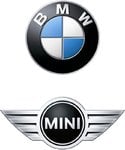I remember seeing one emergency field that had a runway you could land on in any direction. Was it one of the three mentioned?
Well they were 9,000ft long and 750 ft wide with additional unobstructed areas 1,500 ft at each end and all close to the sea. The width of the runway was actually divided into three, two were controlled by air traffic control with the third left open for anyone to just land, for those who had no time to waste or simply no radio. All had FIDO (the fog clearing system using burners). Manston is in Kent (south England) Woodbridge is in Suffolk (East Anglia), Carnaby is in the most beautiful idyll you could imagine Gods chosen county of Yorkshire (see below).
RAF Manston - Wikipedia
RAF Carnaby - Wikipedia
RAF Woodbridge - Wikipedia
Fog Investigation and Dispersal Operation - Wikipedia
To operate FIDO on the above airfields used 250,000 gallons of fuel per hour, which puts into perspective the difference in resources of the two sides, other normal airfields operating FIDO "ONLY" used 100,000 gallons/hour.
Post war Carnaby was used for motorcycle racing and I raced there many times. On the first meeting of the year in March 1982, 3 track marshalls were treated for exposure, it was completely wild. On what was the circuit the place was so huge you had no idea that it was a former airfield, just a massive area of concrete.


